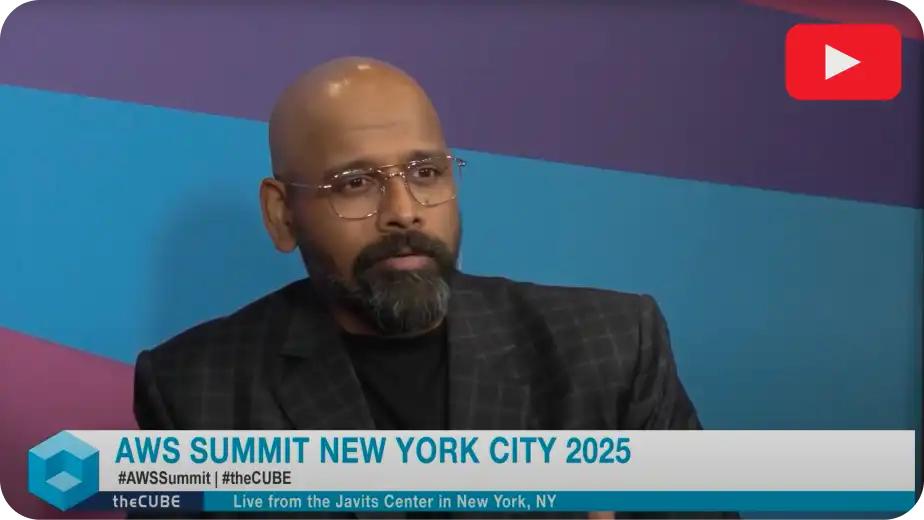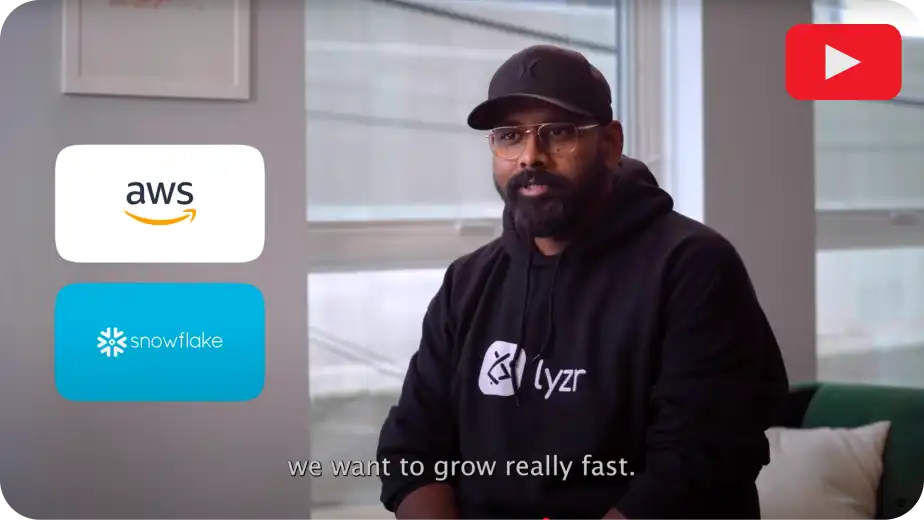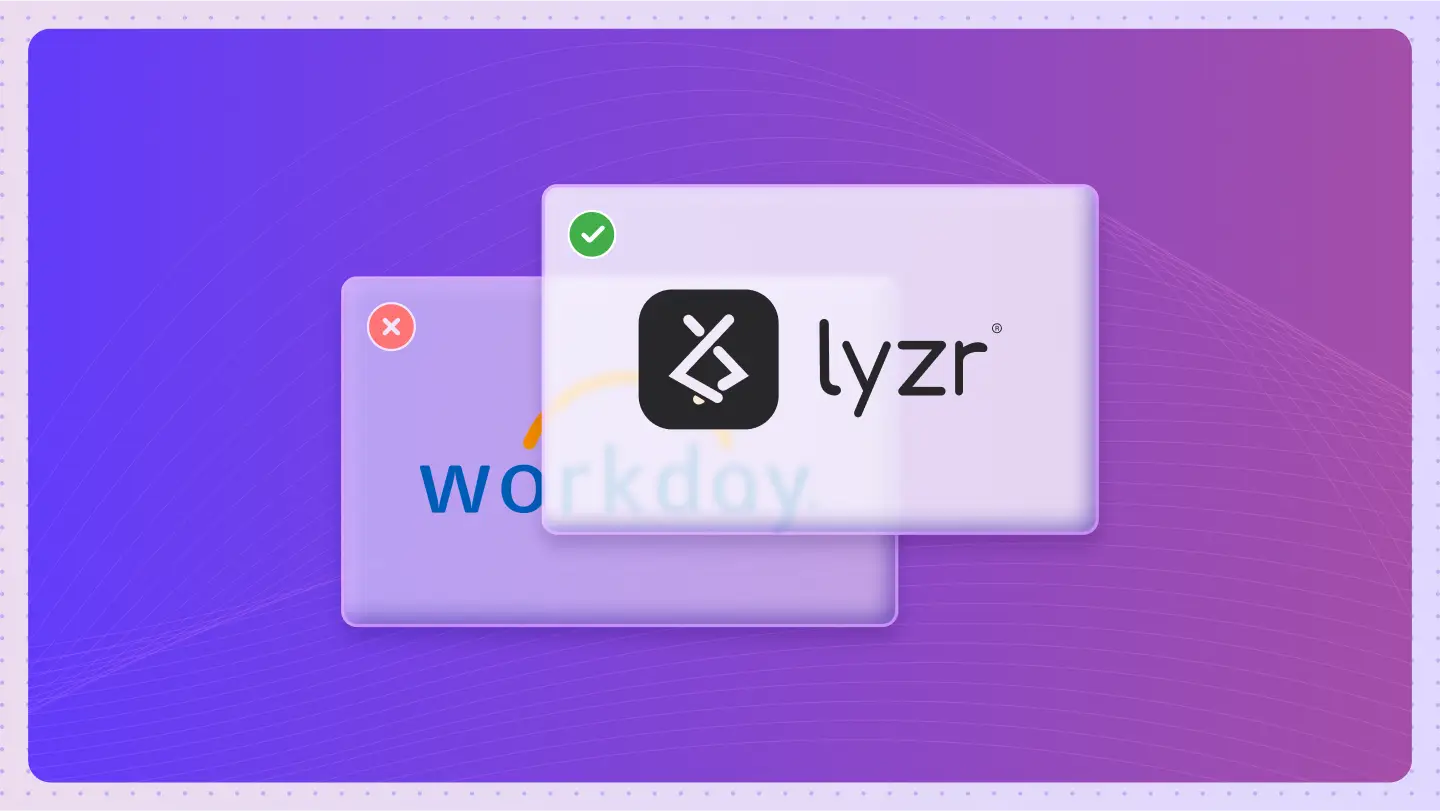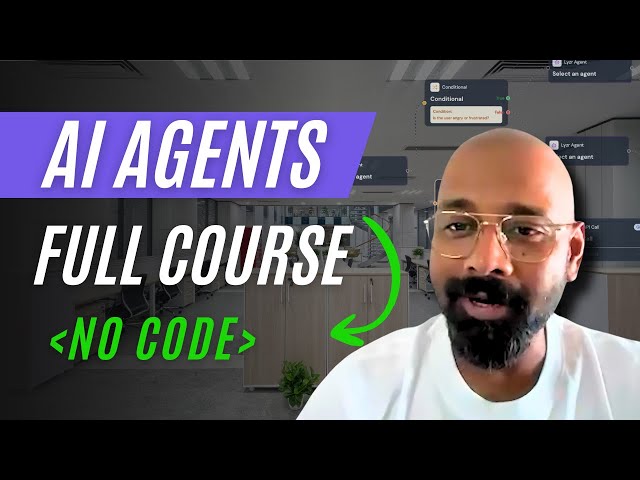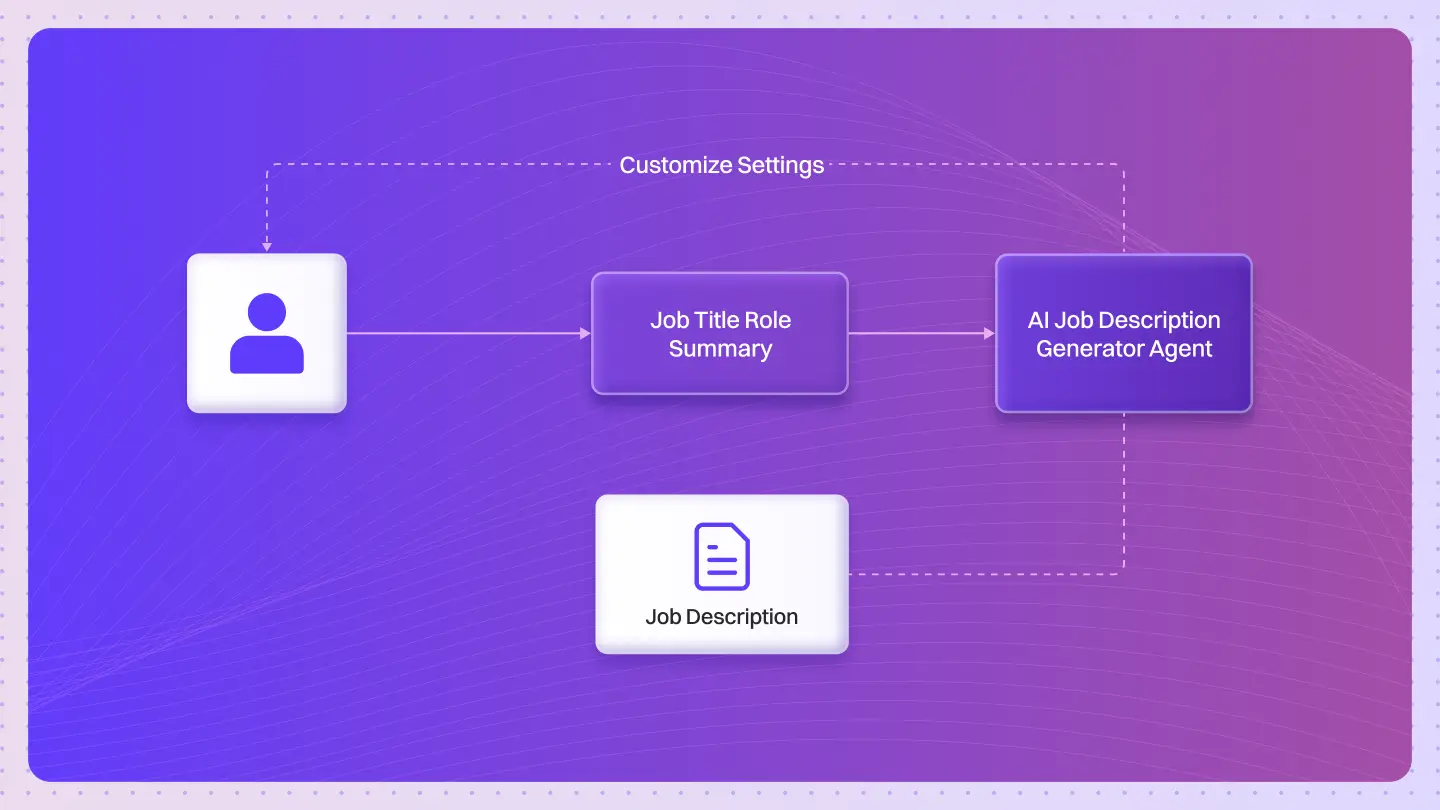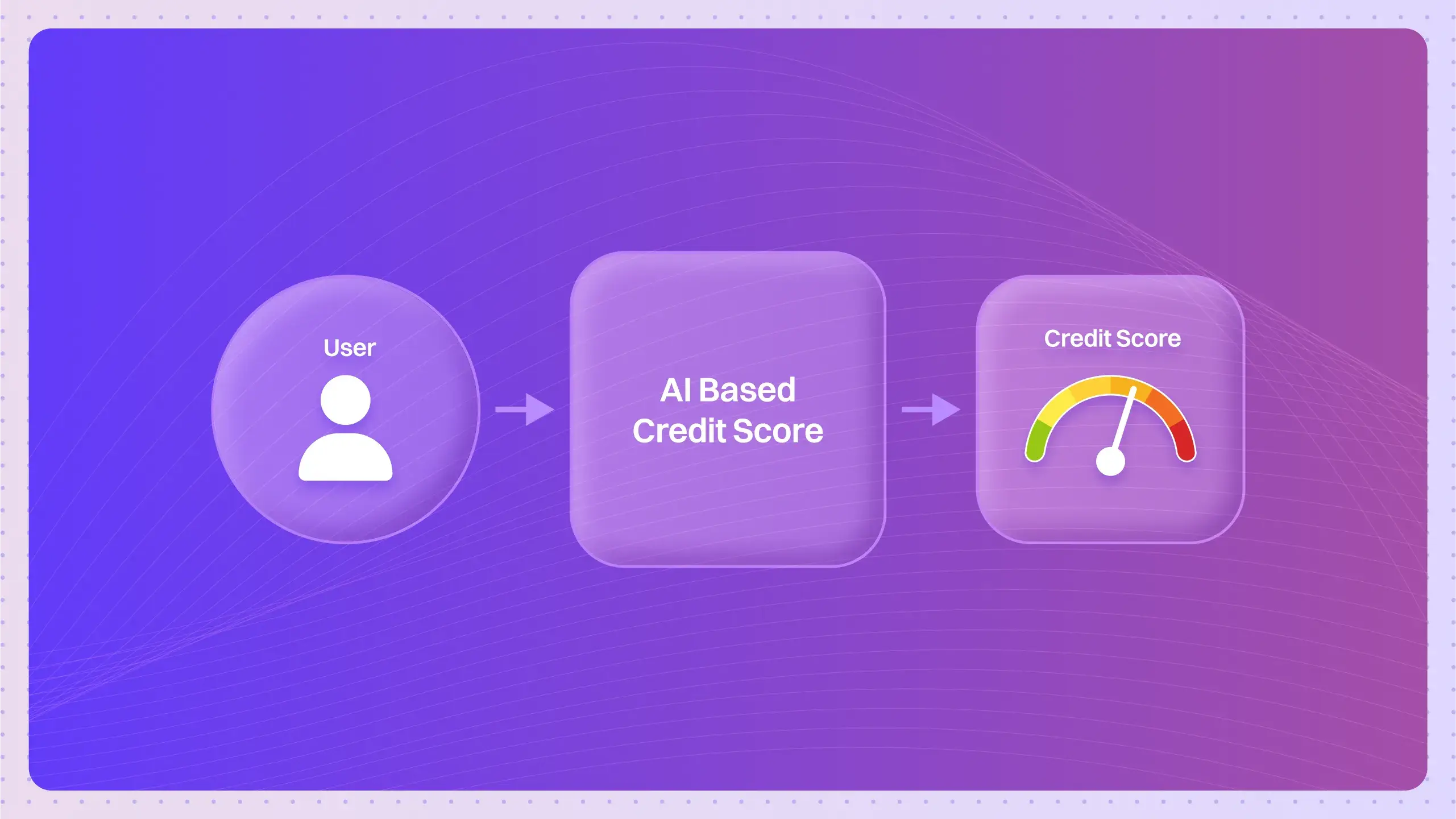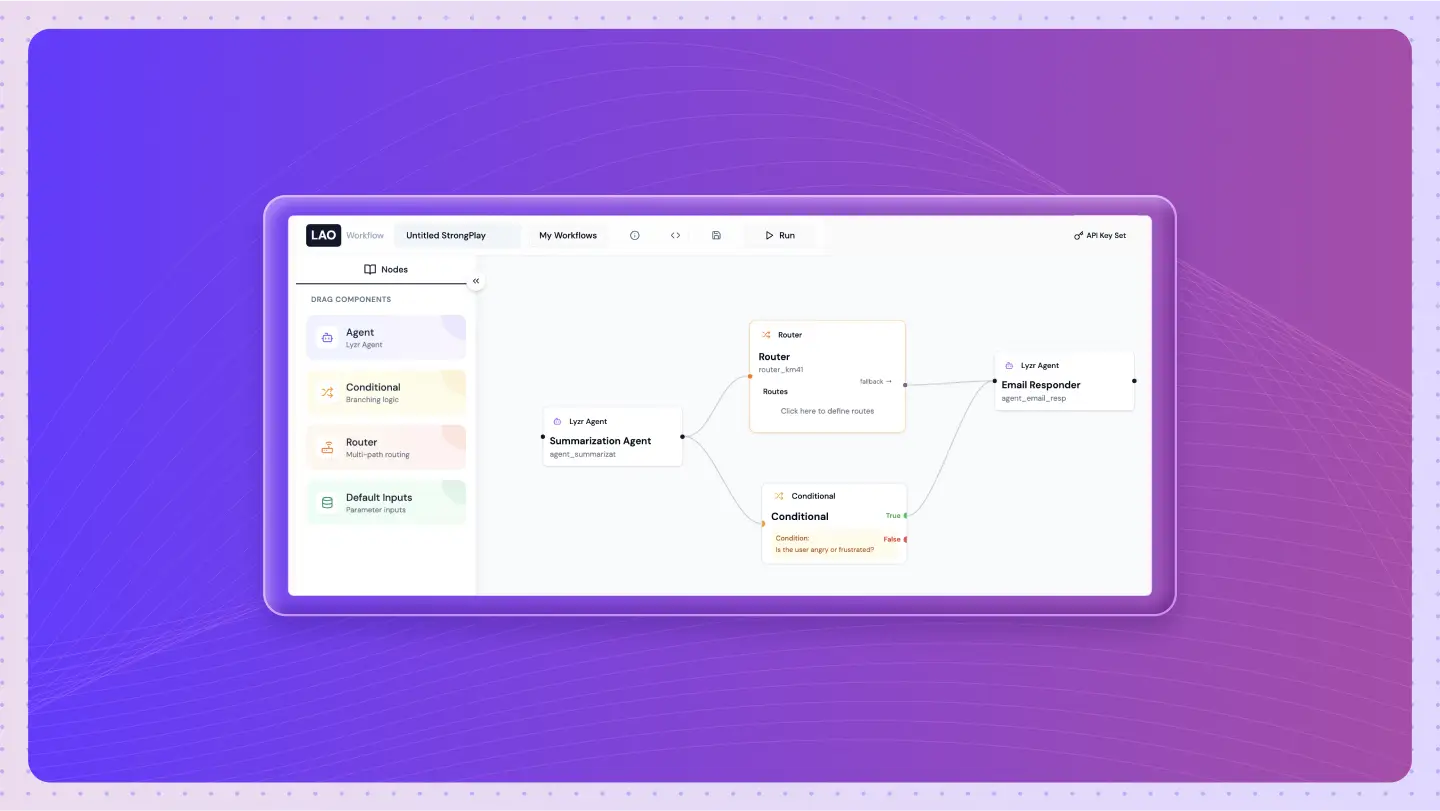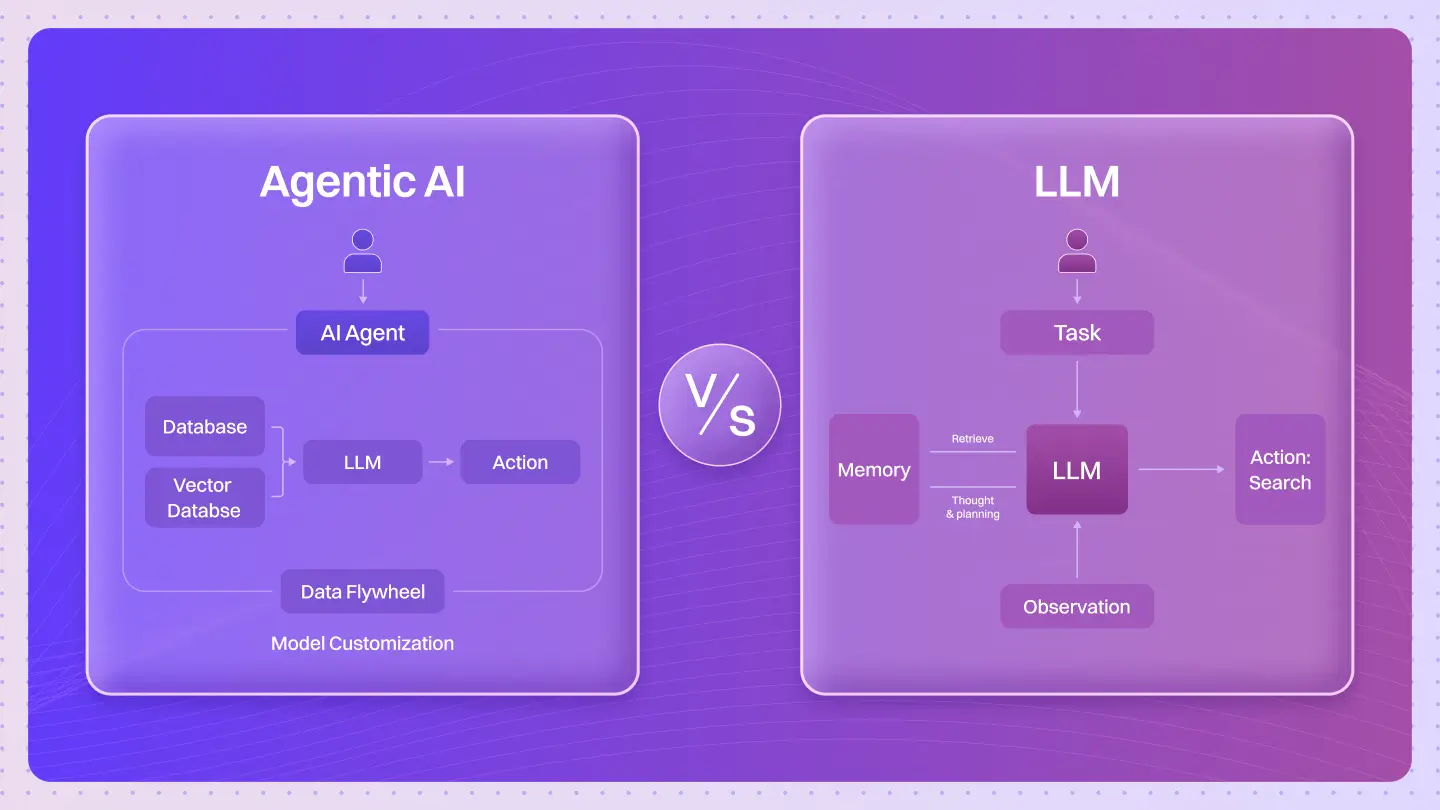Table of Contents
ToggleYou spend months interviewing a senior executive. You check their references, analyze their track record, and debate their cultural fit. The cost of getting it wrong is too high to do anything less.
Yet when hiring an AI Agent for Job Description, that rigor often disappears. The common mistake is to see a simple software purchase where you should see a strategic candidate. It feels like an off-the-shelf tool to fix a nagging problem.
This is a trap. You are not buying a tool. You are making a hire, and this new employee is almost certain to fail if you skip the interview.
Most AI projects die quietly in “pilot purgatory” for this exact reason. They fail the background check with security, get lost in procurement, or simply cannot prove their value. They are predictable failures born from a flawed premise.
So let us run a proper interview. The first step is to define the precise problem this candidate is expected to solve.
The Problem That Demands an AI Agent for Job Description Generation
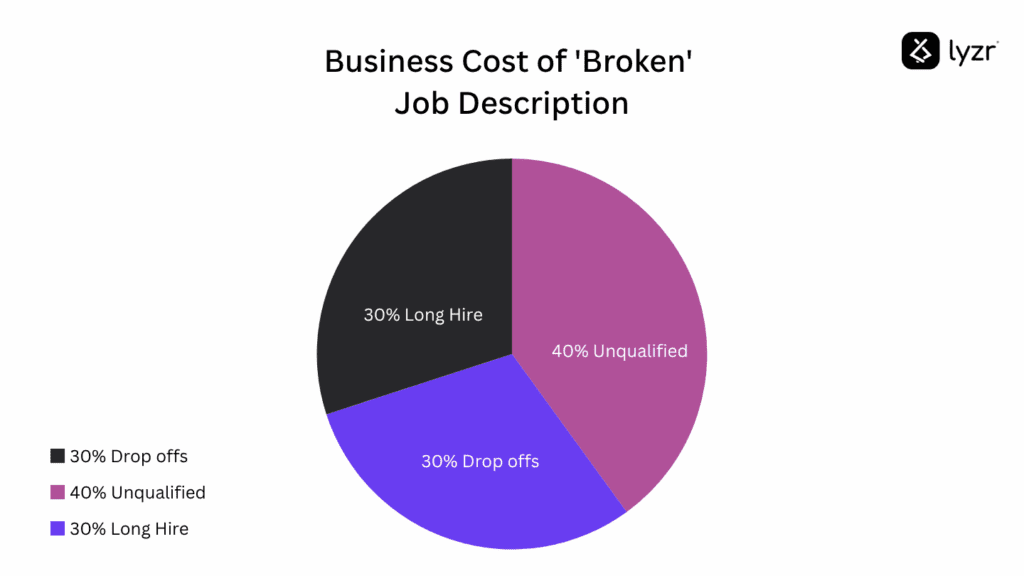
The desire for an AI to write job descriptions is a direct response to a persistent and costly problem. The issue, however, is not a lack of technology. It is a flawed internal process that most companies accept as normal.
We call it “copy-paste chaos.” It is the routine of recycling old job descriptions for new roles. It feels efficient. It feels harmless. But this single habit is a primary source of friction in the modern hiring pipeline.
It quietly poisons the candidate pool from the very beginning. This leads to a cascade of expensive, downstream problems. Before we can appreciate the solution, we must respect the scale of the damage.
The ‘Efficiency’ Trap
The trap is that copying a template feels like a smart shortcut. The reality is that it produces generic, uninspired language. These posts fail to attract top performers, who expect care and precision. They also contain outdated phrases that unintentionally filter out the diverse candidates you need most.
The Data Tells the Story
This is not a theoretical problem. The business impact is clear and measurable. When job descriptions miss the mark, the consequences show up across the entire recruiting function.
| The Symptom | The Impact |
| A 40% increase in unqualified applicants | Wasted hours and a slower pipeline. |
| A 30% longer time-to-hire | Critical projects are delayed. |
| Mismatched role expectations | Higher, more costly offer rejection rates. |
This is the operational fire the AI agent is being hired to extinguish. Now that the problem is clearly defined, the candidate interview can begin.
The Interview, Part 1: Can Your AI Hire Pass a Security Background Check?
The first interview for your AI candidate is not with HR. It is with your Chief Information Security Officer, and it is the one that matters most. A failure here is a complete disqualification, because the risks are too high.
This is a tough, technical interview with a simple goal: to protect the company. The CISO asks a series of direct questions that most simple AI tools are not designed to answer. They are often built for convenience, not for the hard realities of enterprise security. A serious candidate must come prepared.
The Data Control Question
The CISO’s first question is always the same: Where does our data go? For any enterprise, the only acceptable answer is that sensitive company and employee data remains under its own control.
Most off-the-shelf AI tools fail here immediately. They often send your data to external systems, creating an unacceptable risk. A prepared candidate like Lyzr has a clear answer. It offers flexible deployment, allowing it to run in your own Virtual Private Cloud (VPC) or fully on-premise. Your data never leaves your control.
The Accuracy and Audit Test
Next, the CISO will probe for two critical risks: AI “hallucinations” and the inability to audit decisions. An AI that invents facts is a liability. A system whose reasoning is a “black box” is a compliance nightmare.
A typical tool offers weak answers. Lyzr was built to solve this. It uses a dedicated Hallucination Manager to ensure factual accuracy. For auditing, a built-in Explainability Layer provides a clear, traceable log for every AI-driven decision, satisfying regulatory demands.
Here’s a deep dive into how Lyzr delivers secure, explainable, and enterprise-grade AI agents, featuring real-world deployment models:
The interview concludes with a simple scorecard. The difference between a tool and a true enterprise hire becomes immediately clear.
| The CISO’s Security Audit | A Typical AI Tool | Lyzr AI |
| Full Data Control (VPC / On-Prem) | X | ✓ |
| Enterprise Compliance (SOC2, GDPR, ISO) | X | ✓ |
| Built-in Hallucination Management | X | ✓ |
| Audit and Explainability Layer | X | ✓ |
The candidate has passed the technical exam with perfect marks. Now they face a different kind of challenge: the organization’s own internal bureaucracy.
The Interview, Part 2: Can Your AI Hire Survive the Onboarding Gauntlet?
After passing the CISO’s rigorous technical exam, the AI candidate faces a different kind of opponent: the company’s own procurement process. This is where innovation and momentum often die a slow, painful death by committee.
The Chief Financial Officer and legal team have one primary question, and it is not about technology. It is about friction. They want to know how much time, effort, and paperwork this new hire will cost their teams to bring on board before they approve the hire.
The Friction of a Traditional Onboarding
For a typical software vendor, the answer is “a lot of friction.” The traditional path is a months-long battle involving contract negotiations, multiple reviews, and new payment systems. A 90-day cycle is often enough to kill a project’s internal support before it even starts. It is a process designed for caution, not speed.
A Faster Path Through AWS
A prepared candidate has a better answer. Lyzr sidesteps the entire battle by using a company’s existing relationship with AWS. Through an AWS Marketplace Private Offer, the onboarding process is transformed.
What once took months now takes days. There are no new contracts to negotiate or vendors to vet from scratch. The agent is hired through your trusted, pre-approved AWS agreement. All charges appear as a single line item on your existing AWS invoice, and you can even draw down on your committed AWS spend.
The difference is not small. It is the difference between immediate value and a slow death by paperwork.
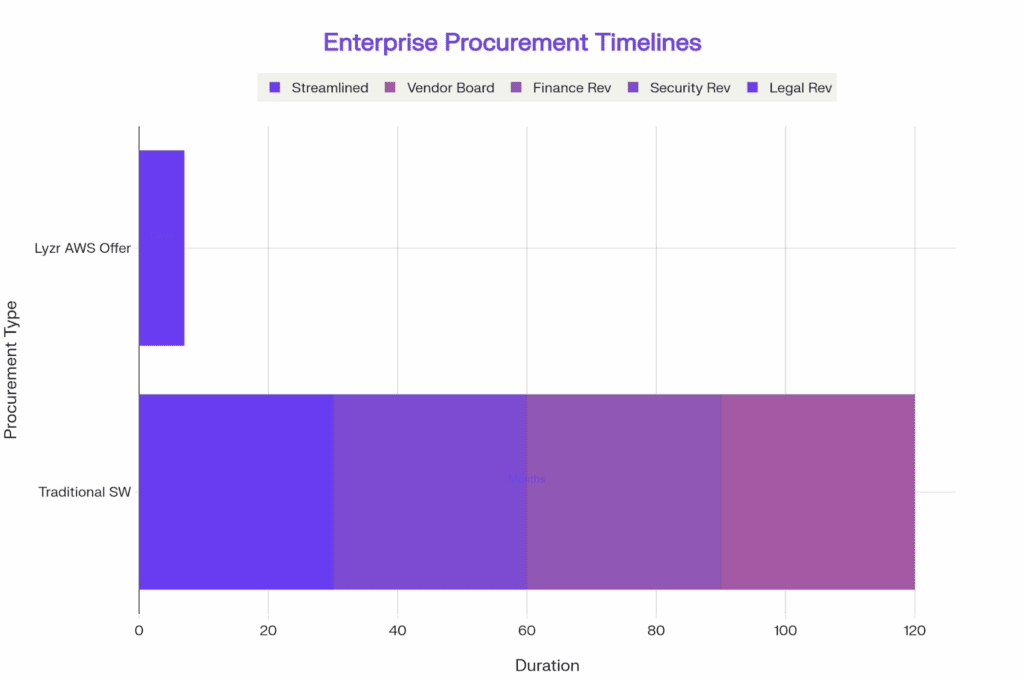
The candidate is now fully hired and onboarded in record time. The paperwork is done. But the final interview is just beginning, and it lasts for the next 90 days.
The Interview, Part 3: Does Your AI Hire Come with a Performance Guarantee?
The candidate is hired. They passed security and survived procurement. Now comes the final and most important interview. It is held by the Chief Operating Officer, it lasts 90 days, and the question is brutally simple: Can you actually do the job?
This is where most corporate AI projects fail. They get stuck in “pilot purgatory.” A successful demo offers a brief glimpse of the future, but there is no clear plan or internal expert to turn that promise into a productive reality. The project withers, a victim of good intentions and poor execution.
Watch how Lyzr’s automated agents transform hiring, from job description creation to candidate selection, in this practical demonstration:
The Trap of the Successful Demo
A simple tool is often just dropped at your door with an instruction manual. It is your problem to make it work. A great demo proves a technology can do something, but it does not guarantee it will ever become a useful asset for your team. This is the gap where most AI investments are wasted.
A Performance Guarantee in Human Form
An elite hire is different. They are held accountable for results. This is why a Lyzr agent arrives with a manager: a Forward Deployment AI Engineer (FDE). This is not a customer service line. It is an embedded expert partner whose only job is to ensure your AI hire succeeds.
The FDE acts as the hands-on technical lead for your project. They provide the strategy, the project management, and the expertise to navigate any roadblocks. It is a true risk-sharing partnership. Lyzr’s commitment is direct: they take on the risk of turning your concept into a production-ready solution.
For the Job Description Generator, this is not a vague promise. It is a guaranteed go-live of just two to four weeks.
This guaranteed success proves the value of the individual hire. A great employee, however, is only as good as the system that supports them.
A Great Hire Is Only as Good as Their Support System
A successful employee is more than their individual skills. They rely on the structure and resources of the entire organization to do their best work. The Lyzr Job Description Generator is the same.
It is a tangible agent that performs a task. But its real power comes from the platform it is built on: the Lyzr Agent Studio. This is the creative and operational core of the entire ecosystem.
The Agent Studio is a low-code environment designed to remove the deep technical complexity of building and deploying AI. It provides the tools, the governance, and the secure foundation that allows agents to function reliably within an enterprise. It is the support system that guarantees performance.
This platform is the foundation for a single agent’s success. But it’s true power is realized when it supports an entire team.
Introducing Your First Hire to Their New Department
The most effective people are great team players. They elevate the performance of everyone around them. Your first AI hire should be held to the same standard.
The Job Description Generator was not designed to work alone. It is the first member of an integrated team called the Lyzr HR Agents Hub. This is a multi-agent system, sometimes called “Diane for HR,” that works together to automate the entire hiring process.
Your new hire works in direct partnership with its AI colleagues. These include the Resume Screener, the Candidate Search Agent, and the Interview Scheduler.
This teamwork is a powerful force multiplier. A great job description provides clean, structured data from the very beginning. This high-quality input makes every other agent in the chain faster and more accurate. The entire system works better because the first step was done right.
An integrated team can transform a department. But the platform it is built on is designed to transform the entire organization.
Meet “Diane,” the Vision for Your AI-Powered Department

Your first AI hire is not the end of the story. It is the beginning. The ultimate goal is not just to fix one process but to build a new capability for the entire organization. The vision, Diane for HR, is a fully autonomous system that can manage an entire business function.
Hiring the AI Agent for Job Description Generation is the strategic entry point into this ecosystem. It establishes a secure, enterprise-grade platform inside your company. This platform is designed to resolve the classic conflict between business units that demand speed and central IT teams that require control.
It accomplishes this through a flexible, two-speed model for AI adoption.
Speed 1: Immediate Value for the Business
Business teams like HR need to solve urgent problems now. The Lyzr AI Marketplace allows them to deploy pre-built, vetted agents for immediate impact. This delivers quick wins that build momentum and provide a clear, quantifiable return on investment.
Speed 2: Long-Term Capability for IT
Simultaneously, central IT and innovation teams must build for the future. The Lyzr Agent Studio provides them with a low-code environment to develop complex, custom agents tailored to unique needs. This fosters the in-house expertise required for a mature, enterprise-wide AI strategy.
This dual approach is the core of the strategy. It offers the governance that open-source frameworks lack and the strategic depth that simple point solutions can never provide. It means the value of any single agent must be measured by the power of the platform it introduces.
This provides a powerful strategic framework. But any strategy must ultimately answer a simple financial question: what is the true return on this investment?
Measuring the True ROI of an AI Agent for Job Description Generation
You do not measure the value of a key executive by the number of meetings they attend. You measure them on their long-term impact on the business. The same is true for your first strategic AI hire.
The immediate return is easy to calculate. It is the time saved and the improved hiring metrics. This is the value of the task.
The strategic return is far greater. By embedding a secure and governed AI platform into your company, you establish a beachhead for all future automation. The guaranteed outcome from the Forward Deployment Engineer model removes the risk of failure that plagues internal projects. This is the value of the foundation you build.
The choice, then, is not about which tool writes the cleverest sentence. It is about which candidate offers a guaranteed, risk-free path to production. You have seen the cost of a broken process and the interview questions an enterprise-ready candidate must answer.
Stop interviewing tools that are destined to fail. It is time to interview a candidate that is ready to start work. Schedule your conversation with Lyzr AI and meet your next strategic hire.
The smartest investment is not in the technology that promises the most, but in the partner who guarantees a result.
Frequently Asked Questions
1. Is an “AI agent” just another name for a chatbot?
No. A chatbot typically follows a script. An AI agent is more like an autonomous employee; it’s a program designed to understand a goal, make a plan, and use tools to accomplish complex, multi-step tasks independently, like managing an entire hiring workflow or analyzing a financial report.
2. Why is the enterprise security model of an AI agent so important?
An agent will interact with sensitive employee, customer, and financial data. A failure in security can lead to significant financial, legal, and reputational damage. Enterprise-grade security and compliance (like SOC2 and GDPR) are non-negotiable table stakes.
3. What is the primary benefit of the AWS Marketplace integration?
Speed and trust. It drastically reduces procurement time from months to days by leveraging your existing AWS relationship and its compliance framework. This allows your teams to get value from the AI agent faster and enables you to draw down on pre-committed AWS spend.
4. What is a “Forward Deployment AI Engineer” (FDE)?
The FDE is a dedicated expert from Lyzr who acts as a strategic partner and project manager, described as a “hands-on AI startup CTO for your project”. Their role is to ensure your AI agent is successfully implemented and moves from the pilot phase into a live production environment, guaranteeing you see a return on your investment.
5. Can Lyzr agents be trained on our company’s specific knowledge?
Yes. Agents can be connected to a Knowledge Base, allowing them to learn from your internal documents, playbooks, and data. This moves them from being a simple tool to a genuine expert on your specific business context.
6. Does the Job Description Generator just fill in templates?
No. It goes beyond templates by taking your specific company culture and role requirements as inputs. This allows it to generate nuanced, engaging, and inclusive job descriptions that are tailored to attract the right kind of talent for your organization and avoid “copy-paste chaos”.
7. How does Lyzr prevent AI “hallucinations” or fabricated answers?
The platform has a dedicated Hallucination Manager and employs a proprietary Hybrid Flow™ AI approach. This system merges the creativity of large language models with the precision of structured data to prioritize factual accuracy and reliable outcomes.
8. How does this platform differ from open-source frameworks like LangChain?
Open-source frameworks are excellent for developer prototyping but lack the built-in enterprise-grade governance, security frameworks, compliance certifications, and dedicated support that are central to Lyzr’s value proposition. Lyzr is explicitly positioned as an “enterprise production platform” in contrast to a “developer’s playground”.
9. How do you justify the TCO against building a solution in-house?
A Total Cost of Ownership (TCO) analysis must factor in the significant internal engineering resources required to build, maintain, and, most importantly, secure a custom solution. The guaranteed outcome offered by Lyzr’s FDE model should be considered a significant risk-mitigation factor that lowers the overall risk-adjusted TCO compared to the inherent risk of in-house project failure.
10. What is the first step to evaluating a Lyzr agent?
The first step is to frame the evaluation not as a tool demo, but as a strategic interview. Engage with the Lyzr team to pilot an agent for a high-impact use case, and work with the FDE to meticulously quantify baseline metrics (like time-to-hire and applicant quality) and the potential ROI for your organization.
Book A Demo: Click Here
Join our Slack: Click Here
Link to our GitHub: Click Here

